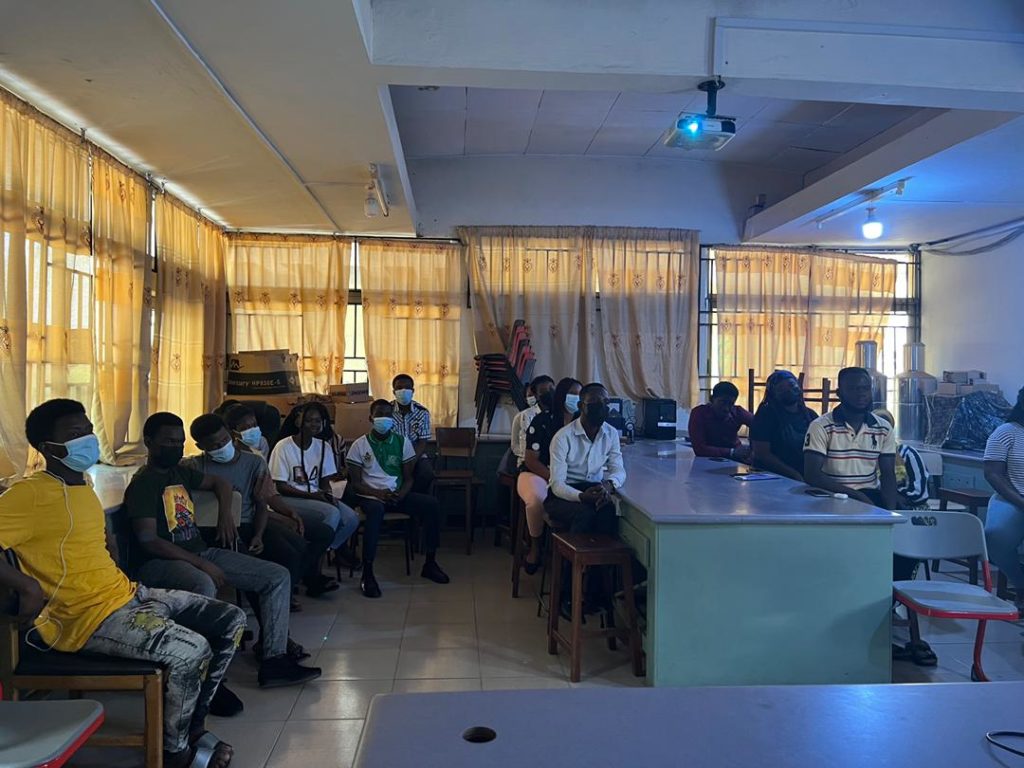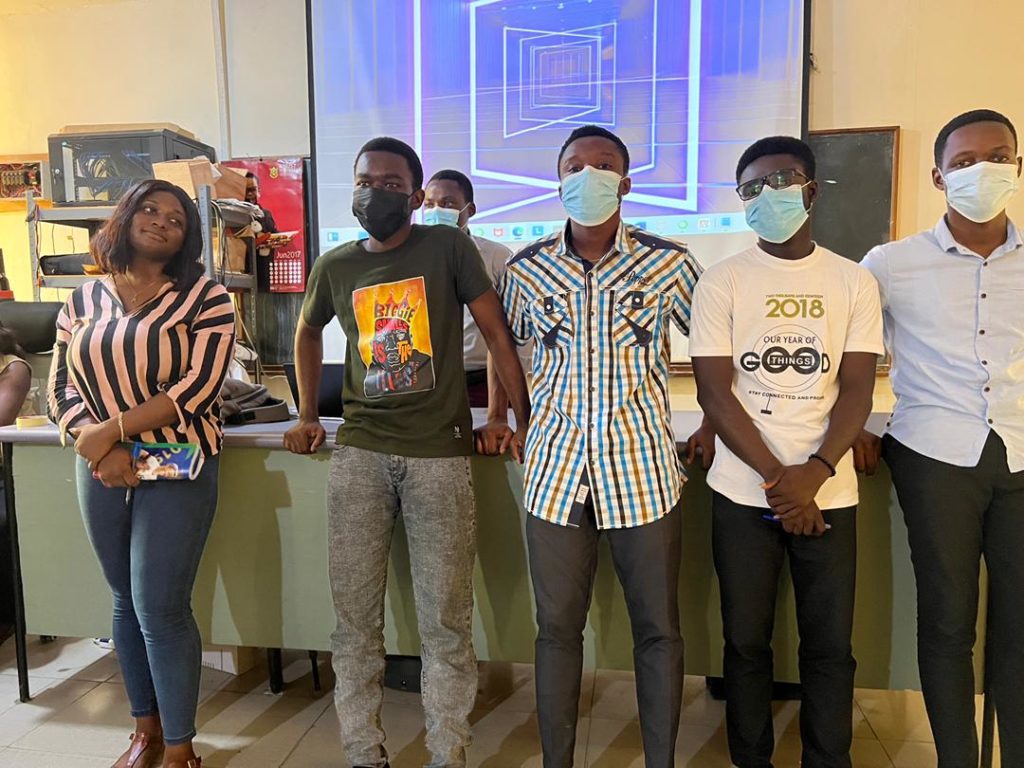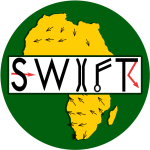Helping to develop capacity for forecaster training in Africa is a central aim of the SWIFT programme. In the Nigerian Meteorological Agency (NiMet) and the Kwame Nkrumah University of Science and Technology (KNUST), Ghana, forecaster training programmes have seen notable developments in recent years, partly due to work carried out through SWIFT. The project has helped directly through the development of teaching materials, as well as indirectly through partnerships and new research.
Practical, economic and societal impact/anticipated impact
Early career forecasters and users of forecasts benefit from improved forecaster training. When trainee forecasters are better equipped to transition from studies to operational work, they can work more effectively at early stages of their career. When training institutions incorporate new developments into forecaster training, innovation can be more widely implemented. This leads to more accurate and reliable forecasts for users, with benefits lasting for years into the future.

SWIFT has helped to improve training at the Regional Training Centre (RTC) for the Nigerian Meteorological Agency (NiMet) in Lagos, and the Kwame Nkrumah University of Science and Technology (KNUST) in Kumasi, Ghana through building human capacity in teachers and through producing teaching materials and frameworks.
Working with African partners, SWIFT has developed a framework for teaching weather forecasting in West Africa. Making use of the new West African Synoptic Analysis Framework (WASA – created in the African Monsoon Multidisciplinary Analysis, AMMA)1, the new framework uses case studies to bridge the gap between traditional meteorological studies and practical applications. Software known as MARTIN has also been developed to allow trainees to have a hands-on interaction with weather data, generating weather maps from information produced by weather prediction models.
In the NiMet Regional Training Centre (RTC) in Lagos, the training framework developed through SWIFT has been adopted into regular courses. The framework forms a large part of their meteorological practical course, which is taught to 70-100 trainee forecasters and BSc students in their Basic Instructional Package each year. Temidayo Popoola, a researcher at the institution, commented that the framework “bridged the gap between the traditional method of teaching meteorological practical and the case-based approach offered by WASA/F”.
At the RTC, the framework has influenced the development of an ‘Innovation Implementation Plan’ for improving training in the institution. The plan was submitted to a World Meteorological Organisation online workshop in 2020, where it ranked in the top three out of over 100 submissions. It is already being offered as a template for online courses, and creation of more modules based on the plan is under way.
The MARTIN software developed by SWIFT has improved the way forecasting is taught in KNUST in the second year of the Meteorology and Climate Science BSc programme. At this stage of the degree programme, students transition from studying general physics courses to learning about meteorology and forecasting. Previously, the forecasting module just explained how the Ghanaian Meteorological Agency produces and disseminates forecasts. Inspired by the SWIFT developments in training, this has been replaced with a practical-based lab module. Students are now split into two groups, with one group using the MARTIN software to produce real life forecasts, and the other group learning about meteorological processes.

The new module, which is taken by approximately 100 students per year, has been popular and is widely considered to be useful in practice. In a survey at the end of the course, 96% of students responded ‘yes’ or ‘maybe’ when asked if they could see themselves effectively using the knowledge acquired.
Recently, a group of students at KNUST have been using SWIFT products to produce their own forecasts, and plans have been made for these students to teach other students how to produce the forecasts, as well as to conduct outreach work. Through an initiative called Forecasters’ Web (ForWEB), 5 students were initially on the production of daily forecasts during a summer internship placement. They now use tools including the SWIFT satellite-based nowcasting (0-6 hour forecasting) product to issue daily forecasts and weather updates to the university and surrounding region. Plans have been made to expand the programme: the current cohort of 5 students will mentor another 25 students to learn to issue the forecasts, and outreach projects will be organised.
SWIFT work is also exposed to postgraduate students at KNUST. Two PhD students at the university recently used SWIFT research to make effective predictions of the West African monsoon.
Benefits of international and collaborative working
By working internationally, SWIFT has encouraged collaboration on training programmes between institutions. Sharing of skills internationally at a research level has also had a positive impact on training, and SWIFT has enabled this through funding of collaboration between KNUST in Ghana and the RTC in Nigeria.
After undertaking a SWIFT international secondment to KNUST, Temidayo Popoola gained the required skills to introduce a python course into the curriculum for the Basic Instructional Package for Meteorological Technicians (BIP-MT) at the RTC in Lagos. Programming skills are vital in meteorology for generating new products to serve the needs of forecast users: these skills have been previously reported as a gap in African capability, so the course is a welcome addition. SWIFT has also previously played an important role in advancing the use of python in African services through two successful training courses in 2018 and 2021.
The python course is not the only example of international knowledge sharing facilitated by SWIFT. Since the beginning of the project, KNUST have also begun to offer a series of international, online research seminars, together with the Ghana Meteorological Agency which is also a partner institution of the SWIFT project.
Training is important for effective delivery of forecasts and sustaining development of forecasting capacity. By producing training materials, SWIFT has encouraged improvements to training programmes in NiMet and KNUST. Trainee forecasters and undergraduate students in meteorology now have more opportunities to engage with real-world forecasting during their studies and have been shown to appreciate this. SWIFT researchers based in NiMet and KNUST have been active in making sure that developments continue, through introducing students to new forecasting products and developing training materials further, such as in the Innovation Implementation Plan. These innovations lead to better understanding of new forecasting products in future forecasters, and ultimately should improve the information which forecasters provide to their communities.
Authors
Jeffrey Nii Armah Aryee, Temidayo Popoola, Martin Parker, Douglas Parker
Footnotes
[1] : Lafore JP, Chapelon N, Beucher F, Diop-Kane M, Gaymard A, Kassimou A, Lepape S, Mumba Z, Orji B, Osika D, Parker DJ, Poan E, Razafindrakoto LG, Vincendon JC. 2017. West African Synthetic Analysis and Forecast: WASA/F. In: Parker DJ; Diop-Kane M (eds.) Meteorology of Tropical West Africa: The Forecasters’ Handbook. Chichester, UK: John Wiley & Sons, Ltd, pp. 423-451 https://doi.org/10.1002/9781118391297.ch11
